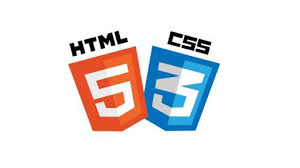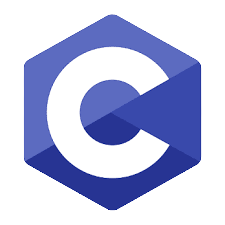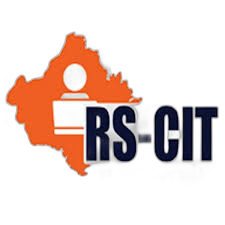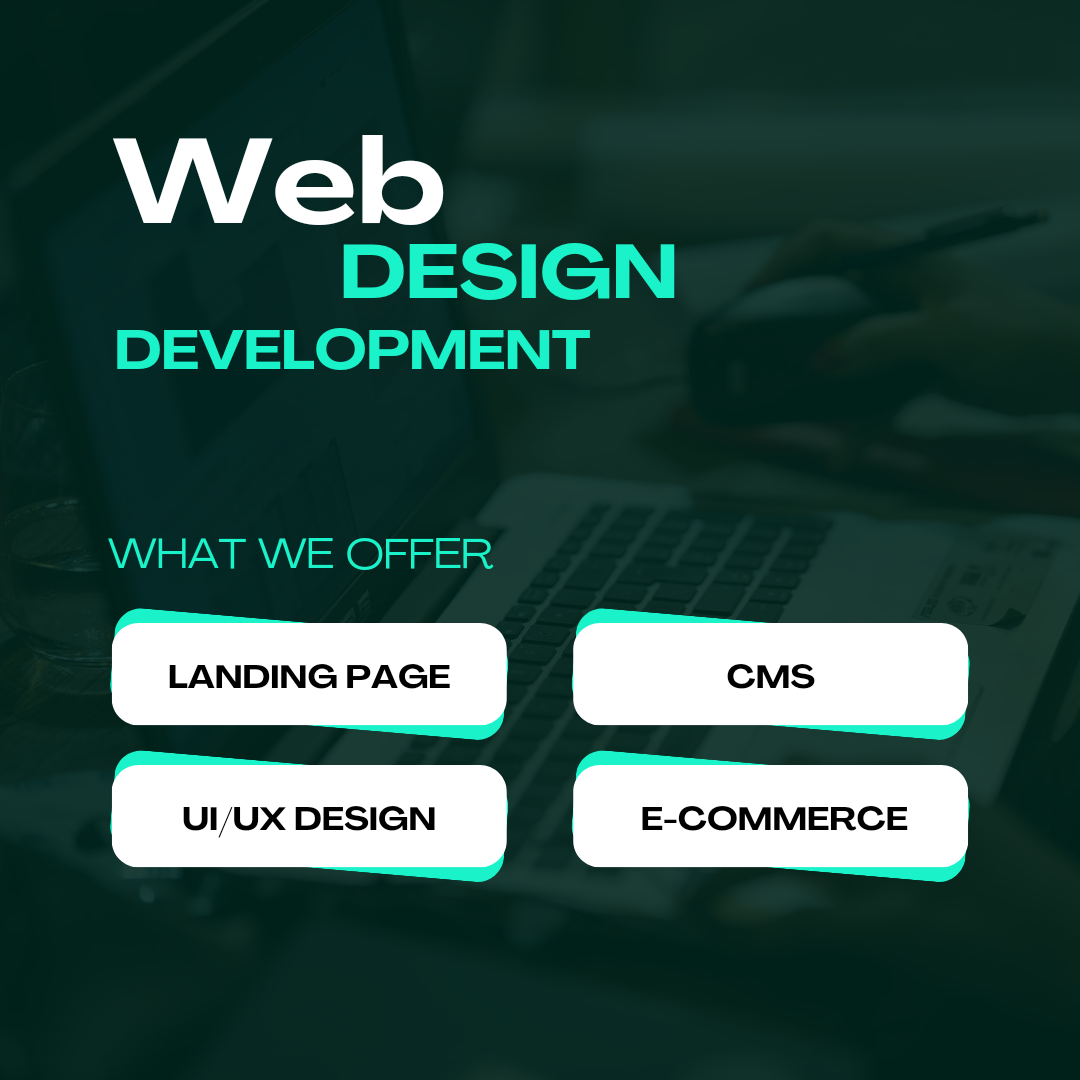The Coding Skool
Join The Coding Skool and unlock the door to endless possibilities in tech. Whether you dream of becoming a software engineer, app developer, or tech entrepreneur, our comprehensive programs provide the tools and knowledge you need to turn your aspirations into reality.

The Coding Skool
Join The Coding Skool and unlock the door to endless possibilities in tech. Whether you dream of becoming a software engineer, app developer, or tech entrepreneur, our comprehensive programs provide the tools and knowledge you need to turn your aspirations into reality.

The Coding Skool
Join The Coding Skool and unlock the door to endless possibilities in tech. Whether you dream of becoming a software engineer, app developer, or tech entrepreneur, our comprehensive programs provide the tools and knowledge you need to turn your aspirations into reality.



Course Overview
The HTML5 and CSS3 course is designed to provide a comprehensive understanding of modern web development techniques using HTML5 and CSS3. This course covers the fundamental concepts, advanced features, and best practices for creating responsive, visually appealing, and accessible web pages. It is ideal for beginners and those looking to enhance their front-end development skills. By the end of the course, students will be proficient in creating structured and styled web content.
Course Content
1. Introduction to HTML5
· Overview of HTML and its Evolution
· Setting Up a Basic HTML Document
· Understanding DOCTYPE Declaration
· HTML Syntax and Elements
· HTML5 Basic Elements
2. Structure of an HTML Document
· Headings, Paragraphs, and Text Formatting
· Lists: Ordered, Unordered, and Definition Lists
· Links, Anchor Tags, and Navigation
3. HTML5 Multimedia
· Adding Images and Image Attributes
· Embedding Videos and Audio
· Using the <video> and <audio> Elements
· Accessibility Considerations for Multimedia
4. HTML5 Forms and Input Types
· Creating Forms and Form Controls
· Input Types: Text, Email, URL, Number, Date, etc.
· Form Validation and Attributes
· Enhancing Forms with HTML5 Features
5. HTML5 Semantic Elements
· Importance of Semantic HTML
· Using <header>, <footer>, <article>, <section>, <aside>, <nav>, and <main>
· Structuring Web Pages for Better SEO and Accessibility
6. Introduction to CSS3
· Overview of CSS and Its Role in Web Development
· CSS Syntax and Selectors
· Including CSS in HTML: Inline, Internal, and External Styles
7. CSS3 Basic Styling
· Text and Font Styling
· Color Properties and Backgrounds
· Borders, Margins, and Padding
· Styling Links and Lists
8. CSS3 Layout Techniques
· The Box Model
· Display Properties: Block, Inline, and Inline-Block
· Positioning: Static, Relative, Absolute, Fixed, and Sticky
· Flexbox Layout: Containers and Items
· CSS Grid Layout: Creating Complex Grid Structures
9. CSS3 Advanced Styling
· Pseudo-classes and Pseudo-elements
· Attribute Selectors and Combinators
· CSS Transitions and Animations
· Transformations: Translate, Rotate, Scale, and Skew
10. Responsive Web Design
· Introduction to Responsive Design
· Media Queries and Breakpoints
· Fluid Grids and Flexible Images
· Creating a Responsive Navigation Menu
· Using CSS Frameworks (e.g., Bootstrap) for Responsive Design
11. CSS3 Special Topics
· Custom Fonts and Icon Fonts
· CSS Variables (Custom Properties)
· CSS3 Filters and Blend Modes
· CSS3 Flexbox and Grid: Advanced Techniques
12. Project Work
· Planning and Designing a Web Page
· Implementing HTML5 Structure
· Applying CSS3 Styling and Layout
· Testing and Debugging
· Presenting and Publishing the Web Page
Course Duration
The course runs for 2 months, with classes held twice a week. Each session is 2 hours long, combining both theoretical instruction and hands-on practice.
Assessment and Certification
Continuous assessment through quizzes, assignments, and practical exercises. Final project presentation and viva. Certificate of Completion awarded to students who successfully complete the course.
Prerequisites
Basic understanding of using a computer. No prior web development experience is required, but familiarity with basic HTML is beneficial.
Enrollment
To enroll, visit our website and fill out the application form. For more information, contact our admissions office at query@thecodingskool.com or +91-70147-72027.
Master the skills of modern web development with our comprehensive HTML5 and CSS3 course and start creating stunning, responsive websites today!

Course Overview
The C Language Course is designed to provide a thorough understanding of the C programming language. This course covers the fundamental concepts, syntax, and advanced features of C, enabling students to write efficient and robust programs. It is ideal for beginners and those looking to strengthen their programming foundation. By the end of the course, students will be proficient in C programming and prepared to tackle more complex programming challenges.
Course Content
1. Introduction to C
· History and Evolution of C
· Importance of C in Modern Programming
· Setting Up the Development Environment
· Writing Your First C Program
2. Basic Concepts
· Structure of a C Program
· Data Types and Variables
· Constants and Literals
· Operators and Expressions
· Input and Output Functions
3. Control Structures
· Conditional Statements (if, if-else, nested if, ladder else if, switch)
· Looping Statements (for, while, do-while)
· Nested Loops and Conditional Statements
· Break, Continue, and Goto Statements
4. Functions
· Function Declaration and Definition
· Passing Arguments and Returning Values
· Scope and Lifetime of Variables
· Recursive Functions
5. Arrays and Strings
· Introduction to Arrays
· One-Dimensional and Multi-Dimensional Arrays
· String Handling Functions
· Array of Strings
6. Pointers
· Understanding Pointers
· Pointer Arithmetic
· Pointers and Arrays
· Pointers to Functions and Structures
· Dynamic Memory Allocation
7. Structures and Unions
· Defining and Using Structures
· Array of Structures
· Unions
· Enumerations
8. File Handling
· File Operations (Read, Write, Append)
· File Pointers
· Error Handling in File Operations
9. Advanced Topics
· Preprocessor Directives and Macros
· Command Line Arguments
· Bitwise Operators
· Memory Management and Debugging Techniques
10. Project Work
· Developing a Comprehensive Project Using C
· Project Planning and Design
· Coding and Implementation
· Testing and Debugging
· Project Presentation
Course Duration
The course runs for 1 month, with classes held twice a week. Each session is 1 hours long, combining both theoretical instruction and hands-on practice.
Assessment and Certification
Continuous assessment through quizzes, assignments, and practical exercises. Final project presentation and viva. Certificate of Completion awarded to students who successfully complete the course.
Prerequisites
Basic understanding of using a computer. No prior programming experience is required, but a logical mindset and problem-solving skills are beneficial.
Enrollment
To enroll, visit our website and fill out the application form. For more information, contact our admissions office at query@thecodingskool.com or +91-70147-72027.
Embark on your programming journey with our comprehensive C Language Course and lay a solid foundation for a successful career in software development!

RS-CIT Introduction
RS-CIT (Rajasthan State Certificate course in Information Technology) is a prestigious program recognized by the Department of Information Technology and Communication (DoIT&C), Government of Rajasthan. This program aims to promote IT literacy among the citizens of Rajasthan.
To bridge the digital divide, the Rajasthan Knowledge Corporation Limited (RKCL) has introduced a user-friendly IT course for the people of Rajasthan. RS-CIT is a high-quality, low-cost IT literacy program offering a comprehensive curriculum, excellent study materials, and a learning management system in both Hindi and English. The course is delivered through a state-of-the-art mechanism, culminating in an examination and certification governed by a State University.
Course Objective
The objective of this course is to empower citizens with a fundamental understanding of Information Technology (I.T.) at an affordable cost. Participants will acquire essential skills to use computers with confidence, increase productivity at home and work, and explore global career opportunities.
Eligibility
Anyone who is literate and has a keen desire to learn Computer and Information Technology is eligible to enroll in this course.
Course Duration
The course duration is 3 months or 132 hours, with 2 hours of instruction per day (1 hour practical and 1 hour theory).
RS-CIT Course Fee
General Candidates: Rs 4200/- per candidate.
Eligible Government Employees: Rs 2700/- per candidate.
RS-CIT Certification
Upon successful completion of the course, candidates will receive RS-CIT certification from Vardhman Mahaveer Open University (VMOU), Kota.
About Us
We're leading Computer Training, software development and consulting company. We provide Training,Consulting, Mentoring, Project Management, Analysis, Architectural Design, Application Development, Web Developement & Designing and other services for various organizations. We Provides field training with online projects, off-line projects, web based projects. We have been part of some of the most important projects in the industry, which dealt in various fields like e-commerce, job search, and mobile technologies with game event management. We have also played a considerable role in the creation of some of the finest and popular entertainment websites and shopping portals.
Professional Email Service

Make your business more professional by using professional email for your business. No website or app is required for the Professional Email Service.
Laravel Application

Certainly! Here's a description of C++ with key points:
1. **Object-Oriented Programming (OOP)**:
- C++ is a multi-paradigm programming language, but it's most prominently known for its support for OOP.
- It allows the creation of classes and objects, encapsulation, inheritance, and polymorphism.
2. **Compiled Language**:
- C++ is a compiled language, meaning that source code is translated into machine code before execution.
- It offers high performance and efficiency due to its close-to-hardware nature.
3. **Rich Standard Library**:
- C++ comes with a rich standard library that provides a wide range of functions and utilities for common programming tasks.
- It includes libraries for handling strings, input/output operations, containers (like vectors, lists, maps), algorithms, and more.
4. **Memory Management**:
- C++ allows explicit memory management using pointers.
- It provides features like dynamic memory allocation and deallocation using `new` and `delete` keywords, which gives programmers control over memory usage.
5. **Performance**:
- C++ is known for its high performance and efficiency, making it suitable for system-level programming, game development, and other performance-critical applications.
- It allows for low-level manipulation and optimization of code, such as inline assembly.
6. **Platform Independence**:
- C++ programs can be written to be platform-independent using abstractions provided by the language and its standard library.
- However, direct system interactions may require platform-specific code.
7. **Compatibility with C**:
- C++ is largely compatible with the C programming language, allowing C code to be integrated into C++ programs seamlessly.
- C++ adds additional features and improvements over C, such as classes, templates, and exception handling.
8. **Templates**:
- C++ templates provide a powerful mechanism for generic programming.
- They allow functions and classes to operate with generic types, enabling code reusability and flexibility.
9. **Exception Handling**:
- C++ supports exception handling mechanisms for dealing with runtime errors and exceptional conditions.
- It allows programmers to write code that gracefully handles errors and failures.
10. **Standardization**:
- C++ is standardized by the International Organization for Standardization (ISO), with the latest version being C++17 (as of my last update).
- The standardization ensures consistency and portability across different compilers and platforms.
These points capture some of the key features and characteristics of the C++ programming language.
Responsive Web Development

Welcome to The Coding Skool's comprehensive fullstack UI design and development services, where we specialize in crafting tailored, modern web applications that seamlessly integrate intuitive user interfaces with robust backend functionalities. Whether you're launching a new project or looking to revamp an existing application, our team is dedicated to delivering solutions that not only meet but exceed your expectations.
UI/UX Design Excellence
At the heart of every successful web application lies a captivating user experience (UX) and an engaging user interface (UI). Our experts begin by understanding your vision and target audience, meticulously designing interfaces that are both aesthetically pleasing and user-friendly. From wireframing to prototyping, we ensure every element enhances usability and reflects your brand identity. Through iterative feedback and testing, we refine designs to achieve optimal usability and visual appeal.
Cutting-Edge Frontend Development
Our frontend development services harness the latest technologies including HTML5, CSS3, and JavaScript frameworks such as React, Vue.js, and Angular. This enables us to create dynamic, responsive interfaces that deliver a seamless experience across devices and browsers. Whether it's implementing complex animations, integrating third-party APIs, or optimizing performance, we prioritize scalability and maintainability to future-proof your application.
Robust Backend Solutions
Powering the core functionality of your application, our backend development team excels in building scalable, secure, and efficient systems. Leveraging frameworks like Node.js, Django, Laravel, and databases such as MySQL, PostgreSQL, and MongoDB, we ensure seamless data management, API integrations, and server-side logic. Our solutions are designed to handle high traffic, maintain data integrity, and support future growth without compromising on performance.
Comprehensive Database Management
Effective data management is crucial for modern web applications. We employ advanced database solutions tailored to your application's needs, ensuring secure storage, efficient querying, and seamless scalability. Whether it's designing normalized database schemas, implementing caching strategies, or ensuring data encryption and compliance, we prioritize data security and reliability throughout the development lifecycle.
Integration and Deployment Expertise
A successful launch is just the beginning. Our team provides end-to-end support in deploying your application to production environments, ensuring a smooth transition from development to live deployment. We adhere to best practices in continuous integration and deployment (CI/CD), automate testing processes, and monitor performance metrics to guarantee optimal uptime and user experience.
Client-Centric Approach
We believe in collaborative partnerships with our clients, emphasizing transparency, communication, and responsiveness throughout the project lifecycle. From initial consultation to post-launch support and maintenance, we are committed to delivering solutions that align with your business objectives and exceed industry standards.
Conclusion
Whether you're a startup aiming to disrupt the market or an established enterprise seeking digital transformation, The Coding Skool's fullstack UI design and development services empower you to innovate and thrive in today's competitive landscape. Contact us today to discuss your project requirements, and let's embark on a journey to create exceptional web experiences together. Together, we'll build not just applications, but digital solutions that leave a lasting impact.
Thanks
Pwa Application Development

Progressive Web Applications (PWAs) represent a significant evolution in web technology, combining the best features of web and mobile applications to provide users with a seamless and engaging experience. Here's a comprehensive description of PWA application development: ### Introduction to Progressive Web Applications (PWAs) Progressive Web Applications (PWAs) are web applications that leverage modern web capabilities to provide an app-like experience to users directly through the web browser. They are built using standard web technologies such as HTML, CSS, and JavaScript but offer features traditionally associated with native mobile apps. ### Key Features of PWAs 1. **Responsive:** PWAs are designed to work seamlessly across various devices and screen sizes, including desktops, smartphones, and tablets, ensuring a consistent user experience. 2. **App-like Experience:** PWAs provide an immersive, app-like experience to users, including smooth animations, offline functionality, and push notifications, enhancing user engagement and retention. 3. **Reliability:** PWAs are designed to be reliable, even in uncertain network conditions. They can work offline or with a poor internet connection, thanks to features like service workers and caching strategies. 4. **Fast Performance:** PWAs load quickly and respond instantly to user interactions, delivering a smooth and snappy user experience comparable to native mobile apps. 5. **Discoverability:** PWAs are discoverable through search engines and can be easily shared via URLs, eliminating the need for app store distribution and installation. 6. **Security:** PWAs are served over HTTPS to ensure data security and integrity, protecting both users and the application from potential security threats. ### Components of PWA Development 1. **Service Workers:** Service workers are JavaScript files that run in the background, intercepting network requests and enabling features such as offline caching, push notifications, and background sync. 2. **App Shell Architecture:** PWAs often adopt the app shell architecture, separating the application's content from its user interface (UI) elements to enable fast loading and smooth navigation. 3. **Web App Manifest:** The web app manifest is a JSON file that defines the PWA's metadata, including its name, icons, theme colors, and display modes, allowing browsers to install the PWA to the home screen and launch it in standalone mode. 4. **Responsive Design:** PWAs are built with responsive design principles to ensure that they adapt and render properly on different devices and screen sizes, providing a consistent user experience. 5. **Offline Caching:** PWAs use caching strategies to store assets and data locally, enabling offline functionality and faster loading times, even when the device is not connected to the internet. 6. **Push Notifications:** PWAs can send push notifications to engage users and provide timely updates or reminders, improving user re-engagement and retention. ### Advantages of PWA Development 1. **Cost-Effectiveness:** PWAs eliminate the need for separate development efforts for different platforms (e.g., iOS and Android), reducing development costs and time-to-market. 2. **Cross-Platform Compatibility:** PWAs are platform-agnostic and can run on any device with a modern web browser, reaching a broader audience without requiring separate app versions. 3. **Improved User Engagement:** PWAs offer features such as push notifications and offline functionality, enhancing user engagement and satisfaction. 4. **Faster Iteration Cycles:** PWAs can be updated and deployed instantly without requiring app store approval, enabling faster iteration cycles and continuous improvements based on user feedback. 5. **Better Discoverability:** PWAs can be indexed by search engines and shared via URLs, increasing discoverability and organic traffic to the application. 6. **Reduced Friction:** PWAs eliminate the barrier of app store downloads and installations, providing a frictionless user experience that encourages adoption and usage. ### Conclusion Progressive Web Applications (PWAs) represent the future of web development, offering a compelling alternative to traditional native mobile apps. By combining the best features of web and mobile technologies, PWAs provide users with fast, reliable, and engaging experiences across various devices and network conditions. With their numerous advantages and growing support from major browsers and platforms, PWAs are poised to revolutionize the way we build and experience web applications.
